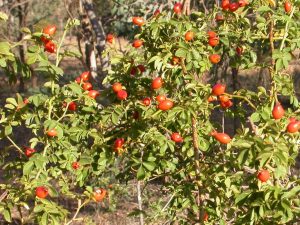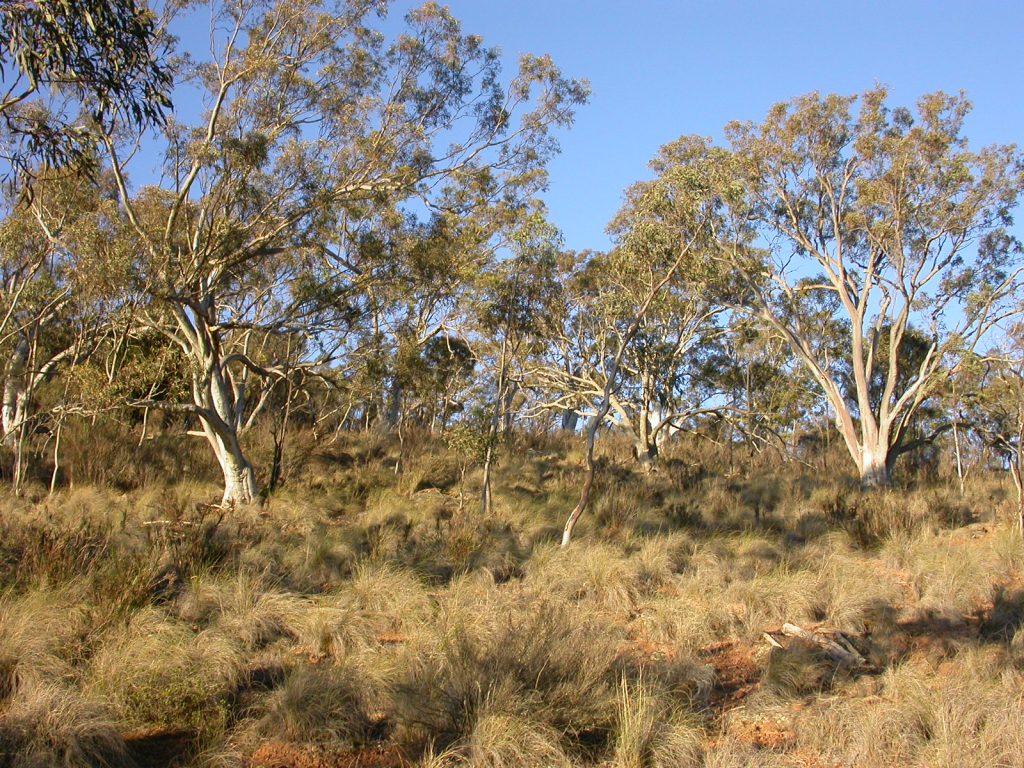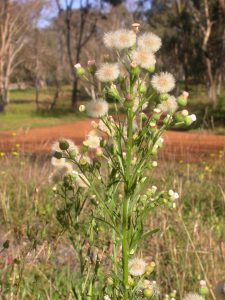
Sweet Briar, Rosa rubiginosa is an exotic environmental weed that birds and foxes spread by eating the fruits and defaecating the seeds.
Due to the wet weather on Sunday, 16th April, we postponed the working bee to Sunday, 23rd April which will be a brilliant Canberra autumn day. Same time – same place – same work…
Join the Friends of Mt Majura to tackle woody weeds and Fleabane along the ephemeral creek and around the Majura twin dams close to the Blue Metal Road.
The slopes on either side of the road and the area along the creek are one of Mt Majura’s most rich and diverse sites with endangered and rare species and include an area which is the least modified land in the reserve.
When: Sunday, 16 April, afternoon from 1pm to 4pm.
Where: meet at the nature reserve gate, car park Mackenzie Street roughly opposite Grayson Street, Hackett; view this map for the meeting point and the yellow outlined working area around the two dams and the ephemeral creek.
Please BYO sun protection, drinking water and garden gloves if you have them and wear long sleeves and pants.
We provide tools, some gloves, herbicide and an introduction.
Inquiries: secretary@majura.org
What to expect: various species of introduced woody weeds such as Sweet Briar Rose (Rosa rubiginosa), Nettle Tree (Celtus australis) and Firethorn (Pyracantha sp.) and some Australian plant species that don’t belong to the Canberra region, such as Cootamundra Wattle (Acacia baileyana) and Willow-leaved Hakea (Hakea salicifolia subsp. salicifolia).
How to control: For this Search and Destroy activity we will be using the Cut and Dab with glyphosate method to kill the environmental woody weeds; see a description of the method at the bottom of this blog. Volunteers are encouraged to work in pairs; if you don’t like to use herbicide you might be the cutter or alternatively pull out fleabane.
In addition to the woody weed massacre, we may carry out a sweep of Fleabane in the area around the dams if we are enough people. Some of the Fleabane might have already been decapitated to remove seeds before they are shed.
 This part of the nature reserve with Scribbly gum, Eucalyptus rossii and an understorey of Red-anthered Wallaby Grass, Rytidospema pallidum on the slope north of Blue Metal Road is probably the least modified area within the Mt Majura nature reserve (W.Pix).
This part of the nature reserve with Scribbly gum, Eucalyptus rossii and an understorey of Red-anthered Wallaby Grass, Rytidospema pallidum on the slope north of Blue Metal Road is probably the least modified area within the Mt Majura nature reserve (W.Pix).
Control of woody weeds using the cut-and-dab method.
Cut stems close to ground level and immediately treat cut surface with herbicide glyphosate (Roundup or equivalent product) applied at high concentration e.g. 1 part glyphosate : 2(-4) parts water; apply herbicide mix with spray or dauber.
The plant’s natural protective mechanism acts very quickly to seal off the cut surface which stops herbicide penetration into the sap stream. It is therefore important to treat the cut surface immediately, i.e. within 30 seconds after the cut; the longer the treatment is delayed, the poorer the result will be. If necessary cut and treat each stem of a multi-stemmed plant separately to avoid delayed herbicide treatment.



